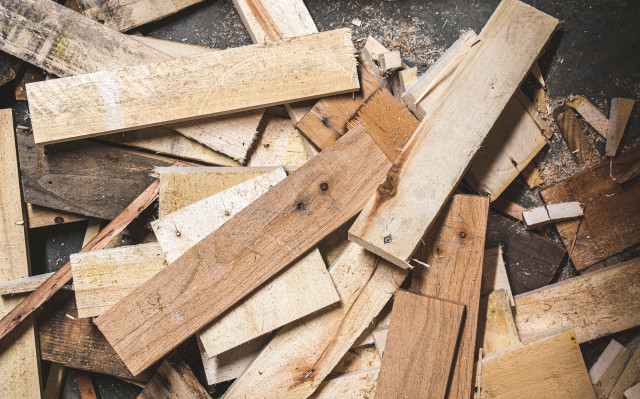
How the Rising Price of Lumber Could Impact Homeowners Insurance
The pandemic has created some extraordinary market conditions throughout the U.S. economy. As people have spent more time at home, the demand for single-family homes and the number of home renovation projects have increased. Social distancing and return-to-work guidelines have limited the supply of labor, creating supply chain issues.
One of the most interesting and tangible results of these conditions has been the price of lumber, which skyrocketed during the past year. The price increase of this valuable raw material could ultimately have a significant impact on the insurance industry, affecting both consumers and insurers and creating even more uncertainty in a market where nothing is certain.
The purpose of insurance is to indemnify an insured from a covered cause of loss. But what happens when costs of parts and labor for repair become inflated? For submitted home insurance claims, insurance costs will likely be significantly more in 2021 than a similar claim last year.
Interestingly, the same has not proven true for personal auto insurance claims. Typically, personal auto premiums are developed on a per-vehicle basis, although technology has recently allowed mileage data to be gathered. During the pandemic, people drove less, leading to fewer accidents. Fewer accidents occurring while the number of insured vehicles remains constant results in a decrease in claim frequency. While supply issues may temporarily result in increased costs to repair or replace a vehicle, the impact of any increase in severity has been offset by the reduction in claim frequency.
Homeowners insurance, however, doesn’t have the benefit of reduced claim frequency. People still live at home, and weather events still happen. This leads to upward pressure on claim severity and loss ratios and an increase in uncertainty.
Insurance premiums are created based on an assessment of the amount of risk being undertaken. Accurately pricing and projecting future trends to ensure that rates will cover future claims is an uncertain business. An increase in costs to replace or repair a home creates a higher risk to insurance companies. This is particularly true if insurers are unable to obtain approval for rate increases to cover those higher costs.
Difficulty also arises when trying to gauge how long the current disruption of increased building materials costs will persist. Insurance companies must set aside money that is readily available to pay for claims. Short-term liquid assets are accompanied with lower returns, however, and the lack of return on assets is further compounded in this historically low interest rate environment.
The arrival of hurricane season in the current environment spells even more uncertainty. Hurricanes often lead to increased costs for insurers and homeowners due to demand surge. In addition to this significant concern, the existing shortage of building materials will further increase costs and delays in construction projects.
Grand scale events like hurricanes can also cause shock losses, creating a substantial disruption to the insurance industry. Homeowners insurance may include Additional Living Expenses coverage, which provides compensation for additional costs of living elsewhere while a home is uninhabitable, paying until the home is repaired or until the policy limit is reached. Therefore, with increased building costs and potential construction delays that affect repair time, the risk to an insurer is compounded if large numbers of homes become uninhabitable for a prolonged period of time.
Clearly, insurers are dealing with a multitude of pandemic-related impacts. But how might consumers be impacted by the current market conditions? The most prevalent impact will relate to the insured value of their home.
To understand this, let’s look at the two types of homeowners insurance coverage. The first coverage type is based on Actual Cash Value, which represents depreciated value. Actual Cash Value, while it will have lower premiums, may not cover the cost of replacement. Consumers who have this type of coverage should verify that their coverage reflects the actual cost of rebuilding their home in today’s market. This is especially true if they have made home additions or similar improvements during the pandemic that would change the home’s square footage and its associated value.
The second coverage type – much more common than Actual Cash Value – is based on Replacement Value, which is intended to collect full replacement costs for sustained losses. However, many homeowners insurance policies contain co-insurance clauses. These clauses are used to ensure that policyholders insure their property to an appropriate value and that the insurer receives a fair premium for the risk. If a property is not insured to an appropriate value, a coinsurance penalty will apply, which limits the amount of a claim that can be returned to the policyholder if a covered loss occurs.
Ultimately, consumers should be prepared for insurance rates to increase, and importantly, they should also be aware that, should a loss occur, they may not have enough coverage to protect their home. For their part, insurers should be communicating to insureds about potential increased costs, and be gathering as much data as possible to quantify uncertain risk factors pertaining to economic and market conditions in order to ensure sound business decisions.
Update from the author: Shortly after I posted this blog, COVID-19 news and vaccine rollout materially changed the market conditions for lumber, and in early July 2021, lumber prices began falling precipitously. We have yet to see if the fall in prices will be long term, or what implications there will be for home insurance prices. Pinnacle will continue to monitor the lumber market conditions and their impact on rates and provide additional analysis and updates accordingly.



